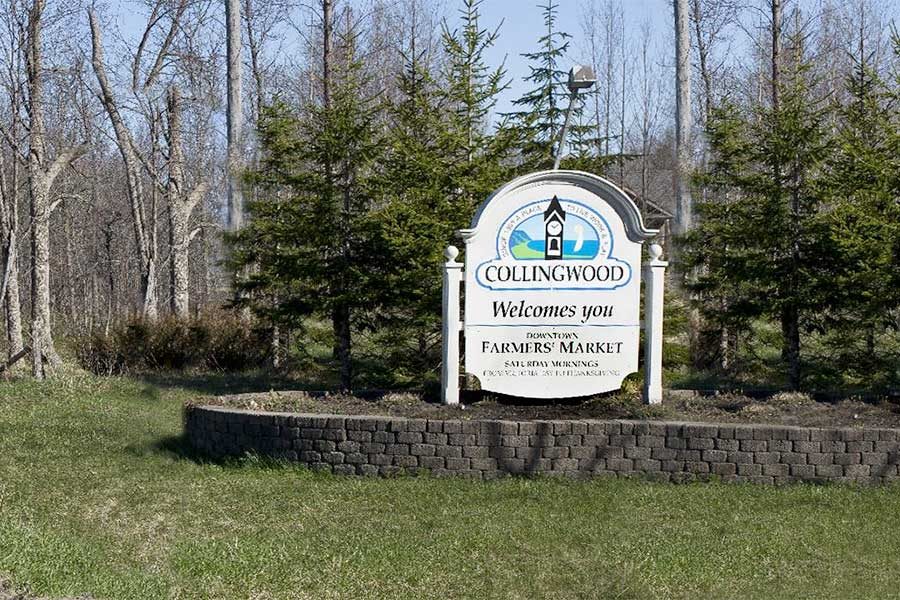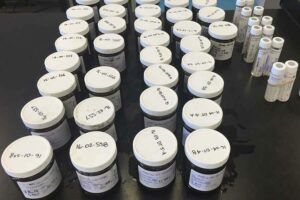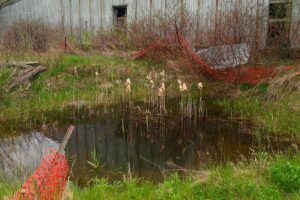In March, 2015, Premier retained Geo-Environmental Drilling Services Limited to install a bedrock-monitoring well to 43 meters (140 feet) below ground surface using direct push and PQ air-core methods. The property was located in the Collingwood area of Ontario, which is known for the presence of oil- and gas-bearing bedrock formations. In the 1850s, the area was briefly explored for the potential commercial exploitation of petroliferous sedimentary rocks into crude oil.
At this location, dark grey shale seams or partings were encountered in the limestone starting at a depth of 18 mbgs and at regular intervals below a depth of 35 mbgs. Vertical, sub-vertical and horizontal fractures were observed in the rock cores. Drilling below 21 mbgs encountered significant natural gas, as can be observed in this video, requiring the abandonment of the borehole before a monitoring well could be installed. The decision to abandon the monitoring well was made in order to be in compliance with Water Wells regulation O. Reg. 903, and for the health and safety of site visitors.
One challenge with situations like this is when groundwater plumes intermingle with bedrock formations that contain naturally elevated concentrations of benzene. A forensic approach is needed in order to demonstrate the extent of anthropogenic impact, versus petrogenic, or naturally occurring conditions.
For more information, contact Kyla Hoyles, Environmental Geoscientist, at (519) 653-7140, ext. 275 or khoyles@premiercorp.ca.





